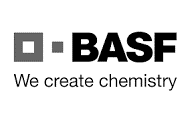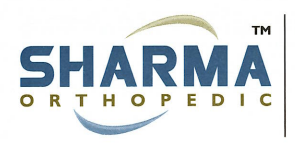- Customs Valuation
- 339 Views
OT:RR:CTF:VS H320778 RMC
Katie Brine
US Trade Logistics
1595 Selby Ave. Suite 103
St. Paul, MN 55104
RE: Valuation of Leased Machinery
Dear Ms. Brine:
This is in response to your letter, dated September 20, 2021, on behalf of [ ] (“the Importer”). In your letter, you request a binding ruling pursuant to 19 C.F.R. Part 177 on the proper method of appraisement of leased equipment imported from Mexico.
You have asked that certain information submitted in connection with this ruling request be treated as confidential. Inasmuch as this request conforms to the requirements of 19 C.F.R. 177.2(b)(7), the request for confidentiality is approved. The information contained within brackets and all attachments to this ruling request, forwarded to our office, will not be released to the public and will be withheld from published versions of this ruling.
FACTS:
According to the information provided, the Importer is a concrete coring and sawing company that operates primarily in the Mid-Atlantic region. At issue in this case is a used Diamond Products model PC6004EC “highway grinder” that the Importer plans to bring to the United States from Mexico. The specification sheet included with the ruling request states that a highway grinder is “designed for high production grinding/profiling of concrete and asphalt pavements.” Model PC6004EC is approximately 49 feet long, 104 inches wide, 152 inches high, and weighs 56,000 pounds. The Importer states that the highway grinder was produced in the United States in 2019, and currently has 1,380 hours on it.
Before importation, the Importer has entered into a lease agreement with [ ] (“the Lessor”), an unrelated entity located in Chile. According to the terms of the draft lease agreement, the Lessor has agreed to lease the highway grinder to the Importer for a term of 12 months. The payment terms state that the monthly fee comprises both a fixed sum of $16,596 plus a variable amount of $37.20 for each hour if monthly use exceeds 180 hours. The agreement also contains a purchase clause allowing the Importer to buy the equipment for $750,000 at the termination of the lease. The purchase clause provides that the agreed purchase price of $750,000 “may be reduced setting off against the purchase price all rental payments effectively paid by the Lessee during the rental period.”
You state that the Importer plans to enter the merchandise under subheadings 9801.00.10, Harmonized Tariff Schedule of the United States (“HTSUS”) and 8705.90.00, HTSUS, and inquire about the proper method of appraisement.
ISSUE:
What is the proper method of appraisement for the leased highway grinder?
LAW AND ANALYSIS:
The preferred method of appraising merchandise imported into the United States is the transaction value method as set forth in section 402(b) of the Tariff Act of 1930, as amended by the Trade Agreements Act of 1979 (“TAA”), codified at 19 U.S.C. 1401a. Transaction value is the “price actually paid or payable for the merchandise when sold for exportation to the United States.”
Here, the merchandise will be imported pursuant to a lease agreement. A lease is defined as, inter alia, “a contract by which one owning . . . property grants to another the right to possess, use and enjoy it for specified period of time in exchange for periodic payment.” See Werner & Pfeiderer Corp. v. United States, 17 C.I.T. 916, 918 (1993) quoting Black’s Law Dictionary 889 (6th ed. 1990). In VWP of America, Inc. v. United States, 175 F.3d 1327 (Fed. Cir. 1999), the Court of Appeals for the Federal Circuit found that the term “sold” for purposes of 19 U.S.C. 1401a(b)(1) means a “transfer of title from one party to another for consideration” (citing J.L. Wood v. United States, 62 C.C.P.A. 25, 33, C.A.D. 1139, 505 F.2d 1400, 1406 (1974)). As a result, CBP has consistently held leased imported merchandise is not considered “sold for exportation to the United States.” See, e.g., Headquartering Ruling (“HQ”) 545112, dated June 7, 1993. Because the merchandise at issue in this case will be imported pursuant to a lease, rather than a sale for export to the United States, transaction value will not apply. When imported merchandise cannot be appraised on the basis of transaction value, it is appraised in accordance with the remaining methods of valuation, applied in sequential order. 19 U.S.C. 1401a(a)(1). The alternative bases of appraisement, in order of precedence, are: the transaction value of identical or similar merchandise (19 U.S.C. 1401a(c)); the deductive value (19 U.S.C. 1401a(d)); the computed value (19 U.S.C. 1401a(e)); and the “fallback” method (19 U.S.C. 1401a(f)).
The transaction value of identical or similar merchandise is based on sales, at the same commercial level and in substantially the same quantity, of merchandise exported to the United States at or about the same time as that being appraised. See 19 U.S.C. 1401a(c). Here, the Importer states that it is unaware of sales of identical or similar merchandise that would satisfy the requirements in 19 U.S.C. 1401a(c). Moreover, because the merchandise consists of specialized equipment that was manufactured in the United States, it is unlikely that such values exist. Accordingly, transaction value of identical or similar merchandise is unavailable.
Under the deductive value method, merchandise is appraised on the basis of the price at which it is sold in the U.S. in its condition as imported and in the greatest aggregate quantity either at or about the time of importation, or before the close of the 90th day after the date of importation. 19 U.S.C. 1401a(d)(2)(A)(i)-(ii). This price is subject to certain enumerated deductions. 19 U.S.C. 1401a(d)(3). Here, the Importer will not sell the merchandise to U.S. customers, so the deductive method is unavailable.
Under the computed value method, merchandise is appraised on the basis of the material and processing costs incurred in the production of imported merchandise, plus an amount for profit and general expenses equal to that usually reflected in sales of merchandise of the same class or kind, and the value of any assists and packing costs. 19 U.S.C. 1401a(e)(1). Here, the Importer was not the original manufacturer of the merchandise and does not have access to the information necessary to calculate the computed value. Accordingly, the computed value method is unavailable.
Because none of the more preferred methods of valuation are available, the highway grinder must be appraised under the “fallback method.” The “fallback method” allows for valuation based on a value derived from one of the methods described above with reasonable adjustments “to the extent necessary to arrive at a value.” 19 U.S.C. 1401a(f). Among other exclusions, the “price of merchandise in the domestic market of the country of exportation” cannot form the basis of an appraisal under the “fallback method.” 19 U.S.C. 1401a(f)(2)(C).
As noted above, it has been CBP’s longstanding position that leased equipment is not considered “sold for export to the United States.” See, e.g., HQ 563355, dated January 18, 2006 citing HQ 542996, dated March 4, 1983. However, in lease transactions, CBP has accepted appraisement under the fallback method using a modified transaction value based on the option to purchase in the rental contract. For example, in HQ 542996, the U.S. lessee imported a “tow crimping machine” under a rental agreement with the lessor. The agreement required the lessee to pay a monthly fee of $1,200 during the six-month rental term, with the option to purchase the machinery at any time during the lease for $48,000, less rental amounts paid. CBP held that, pursuant to the authority to reasonably adjust the other methods of appraisement to arrive at a value, “the transaction value method of appraisement can be reasonably adjusted to permit the agreed-upon purchase price for the machine of $48,000 to be accepted as representing the ‘price actually paid or payable’ . . .”
Here, as in HQ 542996, the rental agreement also provides the option to purchase the machine. Although in this case the right to purchase the merchandise accrues at the end of the lease, rather than at any time during the lease period, in both cases the prices in the option to purchase are net of any rental payments made. Therefore, as in HQ 542996, we find that the merchandise in this case can be appraised based on the full purchase price in the rental agreement (i.e., $750,000).
HOLDING:
The merchandise should be appraised under the fallback method using a modified transaction value based on the option to purchase in the rental agreement.
Please note that 19 C.F.R. 177.9(b)(1) provides that “[e]ach ruling letter is issued on the assumption that all of the information furnished in connection with the ruling request and incorporated in the ruling letter, either directly, by reference, or by implication, is accurate and complete in every material respect. The application of a ruling letter by a Customs Service field office to the transaction to which it is purported to relate is subject to the verification of the facts incorporated in the ruling letter, a comparison of the transaction described therein to the actual transaction, and the satisfaction of any conditions on which the ruling was based.”
A copy of this ruling letter should be attached to the entry documents filed at the time this merchandise is entered. If the documents have been filed without a copy, this ruling should be brought to the attention of the CBP officer handling the transaction
Sincerely,
Monika R. Brenner, Chief
Valuation and Special Programs Branch
Janron Consult, Tax Consultant Kenya, Customs Tax Consultant Kenya, Tax Advisory Kenya








